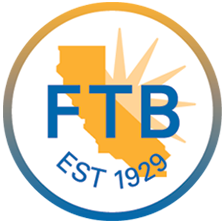
You should be aware of the stealth tax opposed on your social security benefits. Many people believe that social security benefits are exempt from federal income tax. Sadly, that is not often the case. In fact, up to 85% of your benefits could be subjected to federal income tax, depending on how much overall income you have.
While the bite of stealth tax on social security benefits may be painful, it’s a good idea to understand it. With this in mind, continue reading to learn more about what stealth taxes are and some of the rules.
What are Stealth Taxes?
Stealth taxes are a form of taxation that goes unnoticed by the party paying it. When it comes to stealth tax on social security benefits, it goes like this. When you reduce your hours or stop working altogether, your deductions and exemptions are reduced based on your new income level. But now since you are also getting social security benefits, taxable income may increase, but the same tax rate for a higher total tax. Governments use stealth taxes to increase revenue without causing displeasure to taxpayers; so they think.
How Stealth Taxes Are Applied To Social Security Benefits
Here are the rules of federal income tax as it applies to social security benefits.
#1. Provisional Income
Your provisional income dictates the amount of social security benefits that you must report as taxable income on your tax return. Provisional income is calculated by starting with your adjusted gross income (AGI). And this number is found on Page 1, Line 11 of tax Form 1040. Subtract your social security benefits to arrive at your AGI for this purpose.
Next, take that adjusted AGI number and add the following:
- 50% of social security benefits
- Your tax-free municipal bond interest income
- Any tax-free interest on savings bonds used to pay college expenses
- Your tax-free adoption assistance payments from your employer
- Any deduction for student loan interest
- Your tax-free foreign earned income and housing allowances
The result is your provisional income.
#2. Find Your Tax Scenario
Now that you know your provisional income, you can determine which of the following three scenarios apply to you.
A: All benefits are tax-free
Provisional income of $32,000 or less and filing jointly, your social security benefits will be free from federal tax. However, you might still owe state income tax.
For $25,000 or less provisional income, and not filing jointly, your social security benefits are also free from federal tax. But if you are married and file separately from your spouse who lived with you any time during the year, a different rule applies. That is, you must report up to 85% of your social security benefits as income unless your provisional income is zero.
Having federal-income-tax-free benefits is great. But as you can see, this favorable outcome is only allowed when provisional income is notably low.
B: Up to 50% of your benefits are taxed
$32,001 and $44,000, filing jointly with your spouse, up to 50% of your social security benefits must be reported as income. But it’s different when income is between $25,001 and $34,000 and not filing jointly. In this case, you still must report up to 50% of your benefits as income.
C: When up to 85% of your benefits are taxed
Provisional income above $44,000, filing joint return, up to 85% of your social security benefits must be reported. Not filing jointly, above $34,000 provisional income, the 85% rule applies.
The 85% rule also applies if married and filing separately, unless your provision income is zero.
Talk To The Tax Experts At The Ray Group
The above is a simplified explanation of stealth tax on social security benefits. With the necessary information, our tax experts can precisely calculate your federal income tax, if any, on your social security benefits. Contact us today to learn more or visit our tax firm in Temecula.
You may also enjoy reading: How The Inflation Reduction Act Benefits Nonprofits







